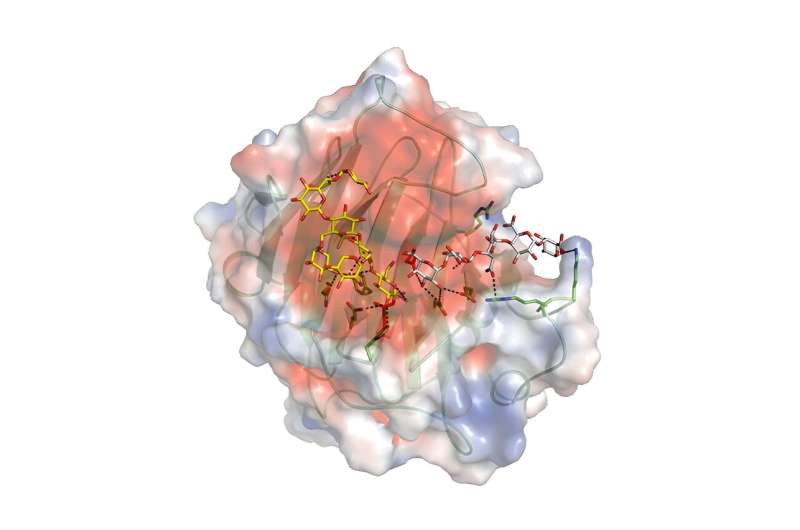This article has been reviewed according to Science X's editorial process and policies. Editors have highlighted the following attributes while ensuring the content's credibility:
fact-checked
peer-reviewed publication
trusted source
proofread
Engineering of plant cell wall by modifying enzymes opens new horizons

A newly discovered way of optimizing plant enzymes through bioengineering has increased knowledge of how plant material can be converted into biofuels, biochemicals and other high-value products.
The University of Adelaide-led study presents innovative ideas for how the walls of plant cells can be assembled, structured and remodeled by controlling specific enzymes' catalytic function. The study was published in Plant Journal and was conducted with an international, multidisciplinary team of researchers from the Institute of Chemistry of the Slovak Academy of Sciences and the Huaiyin Normal University in China.
Fundamental plant cell properties—such as structure, integrity, cytoskeletal organization and stability—are now viewed differently, suggesting new alternatives.
Studying the catalytic function of specific enzymes—a process termed "xyloglucan xyloglucosyl transferases"—allowed researchers to better understand how they link diverse polysaccharides to form structural components of plant cell walls.
"This work contributes to the essential knowledge of how xyloglucan xyloglucosyl transferases can be understood and their fundamental properties controlled—for example, to improve their catalytic rates and stability," said project leader Professor Maria Hrmova.
For plant material to be used in the production of biofuels, plant cell walls need to be deconstructed and the resultant materials chemically processed. The properties of the cell walls can be altered to be less rigid, therefore making biofuel production more efficient and cost-effective.
The finding also has applications for the pharmaceutical industry, where enzymes are sought as environmentally friendly and cost-effective options in bioremediation, and other applications.
Bioremediation is the removal of contaminants, pollutants and toxins from the environment through the use of living organisms.
"Although the definition of the catalytic function of xyloglucan xyloglucosyl transferases has significantly progressed during the past 15 years, there are limitations, and still a lack of information, in how this knowledge can be organically implemented in the functionality of plant cell walls," she said.
This teamwork builds upon 60 years of xyloglucan chemical and biochemical research of this and other research groups.
The research team used sensitive high-performance liquid chromatography with fluorescent reagents to monitor complex biochemical reactions of polysaccharides in an efficient way.
"We also applied 3D molecular modeling and molecular dynamics simulations to gain insights into the mode of action of these enzymes on fast time scales," Professor Hrmova said.
"Our findings are supported by plant and cellular biology approaches we used to offer novel ideas on the function of these enzymes in vivo."
More information: Barbora Stratilová et al, Engineering of substrate specificity in a plant cell‐wall modifying enzyme through alterations of carboxyl‐terminal amino acid residues, The Plant Journal (2023). DOI: 10.1111/tpj.16435
Journal information: The Plant Journal
Provided by University of Adelaide





















